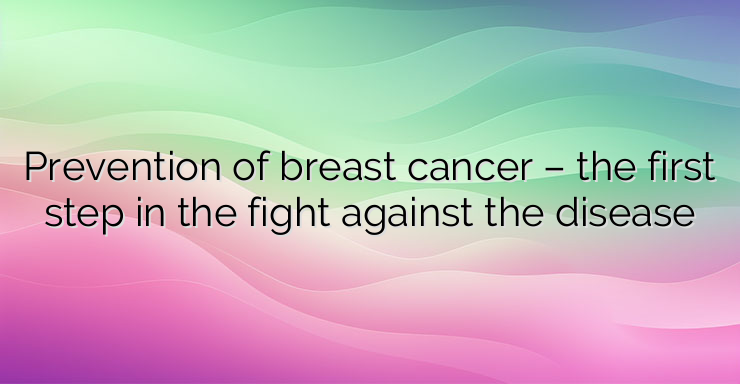Breast cancer is the most common cancer among women worldwide. The majority of women who suffer from this condition are over 40 years of age. In recent years, there has been a decline in the age limit, with breast cancer cases increasing in women up to the age of 30. Unfortunately, in many cases, breast cancer is detected and diagnosed when it is at an advanced stage. Then the complaints are more serious, complications of the disease are possible, the volume of the surgical intervention is greater, and the postoperative period is more severe. That is why timely detection of changes in the breast is of such great importance. Carrying out regular prophylactic examinations of the mammary gland is of great benefit for the early diagnosis of the malignant disease. Breast cancer has been shown to be curable when caught at an early stage. An important stage of prevention is breast self-examination. This is done by looking and feeling. It is monitored for symmetry, changes in the color and structure of the breast, whether there is secretion from the nipple. Feeling a seal or “lump” of a different size is an alarming symptom to prompt you to seek medical help. Ultrasound of the mammary glands is a non-invasive and safe method for diagnosing changes in their structure. It is recommended that ultrasound examinations of the breast begin around the age of 30. After that, annual follow-up is required. By means of this method, benign from malignant formations can be distinguished, as well as different mastopathies of inflammatory origin can be diagnosed. Up to the age of 35, the breast examination is performed with an ultrasound, only in very serious cases, mammography is performed. The reason for this is that at a young age and in women who have not given birth, the mammary glands are still very dense, contain a lot of parenchyma, which “prevents” mammography from seeing tumor formations. Ultrasound is also recommended for more frequent follow-up of the mammary gland, when frequent exposure with mammography is not recommended. The examination is carried out in a lying position, on the back, and the hands are placed above the head. During the examination, both glands and the armpits are checked for enlarged lymph nodes. NEWS_MORE_BOX Mammography is an imaging method used to screen for breast cancer. With it, using a relatively low dose of X-ray radiation, the structures that make up the mammary gland are visualized. Usually, mammography examines both mammary glands in two mutually perpendicular projections, thus small formations that cannot be felt can be detected. This method is suitable for the examination of all women who have symptoms on the side of their mammary glands such as swelling tumor masses, thickening or redness of the skin of the breast, secretion from the ducts, deformation of the nipple or pain.It is recommended that mammography be done once every two years after the age of 40. In some cases, it is necessary to have examinations more often, for example in risk groups of patients or when a certain finding is followed over time (whether it grows or does not change). Early diagnosis of breast cancer increases many times the chances of a complete cure. In its early stages, malignant diseases rarely have obvious warning signs, complaints are often general and non-specific, and when the first symptoms appear, the process is already advanced. Prevention of diseases is the first step on the way to their timely detection and treatment. That is why we must be active and responsible for our health.


Leave a Reply